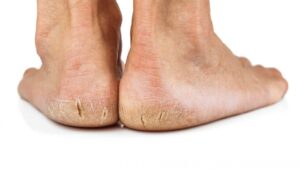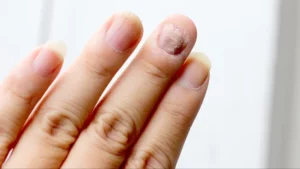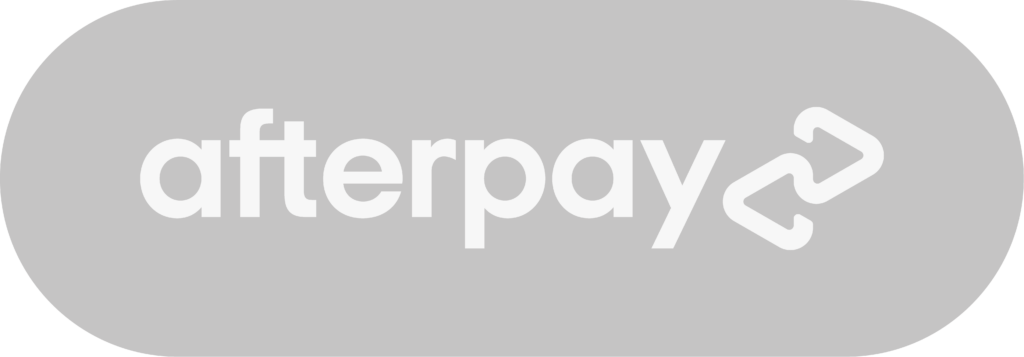The list of options for the treatment for Plantar heel pain is quite extraordinary, and includes:
- Extracorporeal Shock wave therapy (ESWT)
- Radiotherapy
- Low dye taping
- NSAID’s
- Surgery
- Tension night splints
- Myofascial Trigger point therapy MTrP
- Corticosteroid infiltration
- Custom orthotics and prefabs
- Stretching
- Infiltration of platelet-rich plasma
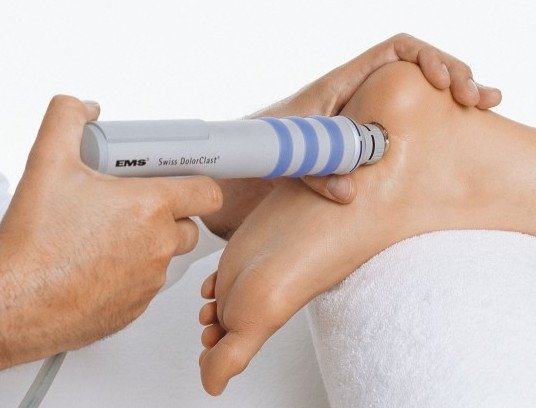
ESWT: Extracorporeal Shock Wave Therapy (ESWT) involves the conversion of a sound wave into a shock wave that is applied repeatedly to a specific area of the body. The technique is similar to lithotripsy, which is used to treat kidney stones. In recent years the technique has become popular in the treatment of a number of recalcitrant musculoskeletal conditions including tennis elbow, achilles tendinopathy,plantar fasciitis, and tendinitis of the shoulder.
Meta analysis by Dizon et al (2013) concluded moderate- and high intensity ESWT were effective in the treatment of chronic plantar fasciitis. For acute heel pain, there is little or no evidence to support the use of ESWT.
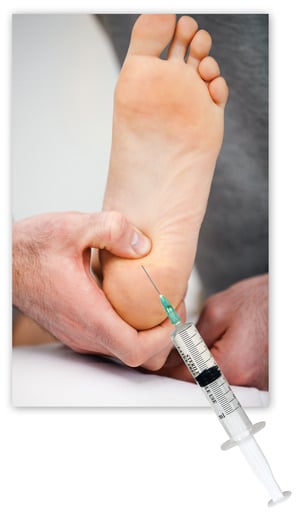
STEROID INJECTIONS: The results from trials comparing steroid injections with placebo substances show
- no advantage in the active substance
- only a short term improvement over placebo (Crawford and Thomson, 2008)
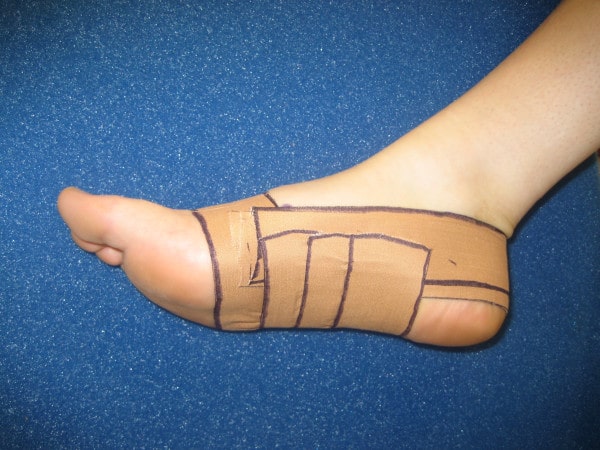
LOW DYE TAPING: A study by Radford et al (2006) was able to demonstrate that when used for the short-term treatment of plantar heel pain, low-Dye taping provides improvement in ‘first-step’ pain compared with a sham intervention after a one week.
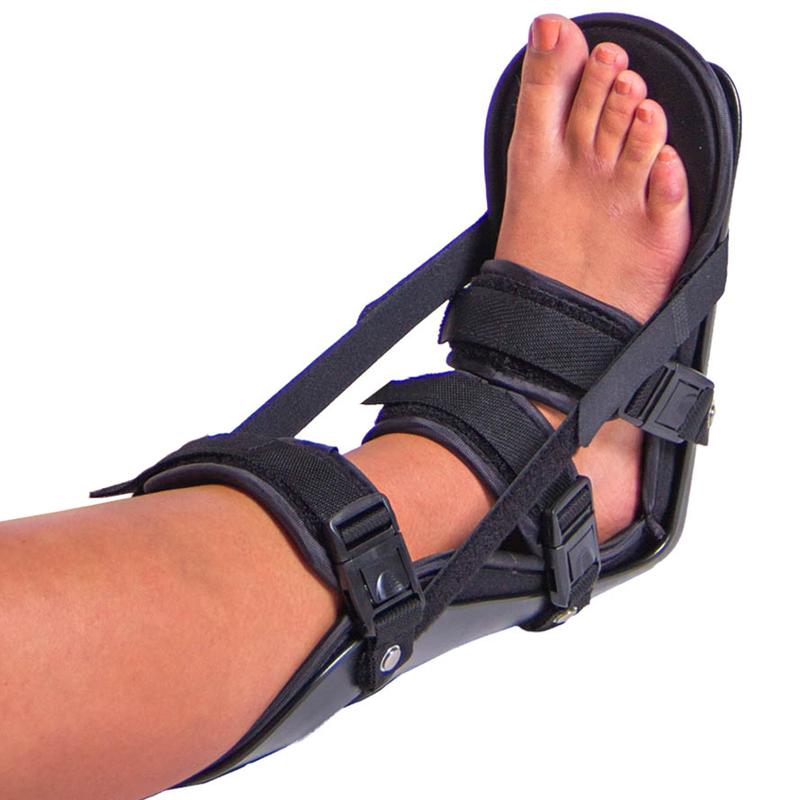
NIGHT SPLINTS: According to Bekler et al (2007), patients without previous treatments for plantar fasciitis obtain significant relief of heel pain in the short term with the use of a night splint, however, this application does not have a significant effect on prevention of recurrences after a two-year follow-up.
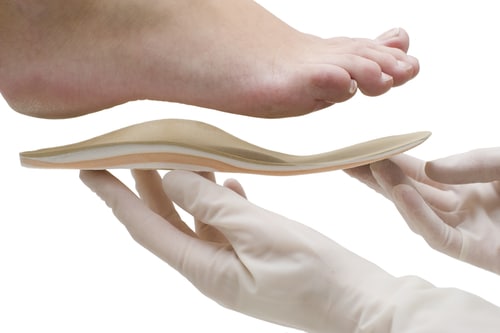
CUSTOM FOOT ORTHOSES: Custom foot orthoses have been shown to be effective in both the short-term and long-term treatment of pain. Parallel improvements in function, foot-related quality of life, and a better compliance suggest that a foot orthosis is the best choice for initial treatment plantar fasciitis (Roos et al 2006)

STRETCHING:Specific stretching the plantar fascia for CPHP has been shown to be superior to traditional weight bearing GSAT (gastrocnemius soleus Achilles tendon) stretching. Three randomised controlled trials have now shown the effectiveness of plantar fascial stretching (Rompe 2010, DiGiovanni 2006, DiGiovanni 2003). It must therefore now be concluded that specific stretching of the plantar fascia is an important part of treatment.
The technique is incredibly simple, and involves pulling the hallux toward the head for a stretch count of 30. it is demonstrated in this photo.

PLATELET RICH PLASMA INFILTRATION: Once considered an experimental therapy for CPHP, platelet rich plasma (PRP) infiltration is gaining traction as a treatment option. It remains, however, extremely controversial, and clinicians are divided in opinion as to efficacy.
For more information see the Plantar Fasciitis Treatment The Ultimate Guide
Based on Evidence this is ModPod Plantar Fascial Protocol
- Institute the earliest intervention possible, do not wait for the pain to worsen.
- Use low dye taping as an immediate, short term management protocol.
- Use diagnostic ultrasound to identify fascial thickening
- Immediately incorporate a stretching program focussing on the triceps surae (calf) complex, and more specifically of the plantar fascia
- Especially consider a padded non rigid orthotic device, with soft heel lift.
- Consider using a lateral forefoot wedge of approximately 5 degrees to “unload” the fascia. This can be incorporated on to the orthotic
- Change treatment appropriately for more a chronic condition. There is some reasonable evidence for the use of ESWT in plantar heel pain six months old or older.
- For the athlete, and especially the runner, shoe selection will become very important. It seems recommending minimalist footwear (let’s for the sake of the argument call this a drop of 4mm or less), may be counterproductive given the increased ankle joint moment and eccentric load on the Achilles tendon. Some arch support may be beneficial, and it seems clear cushioning will be important in this condition.
Reference: Bartold Biomechanics

